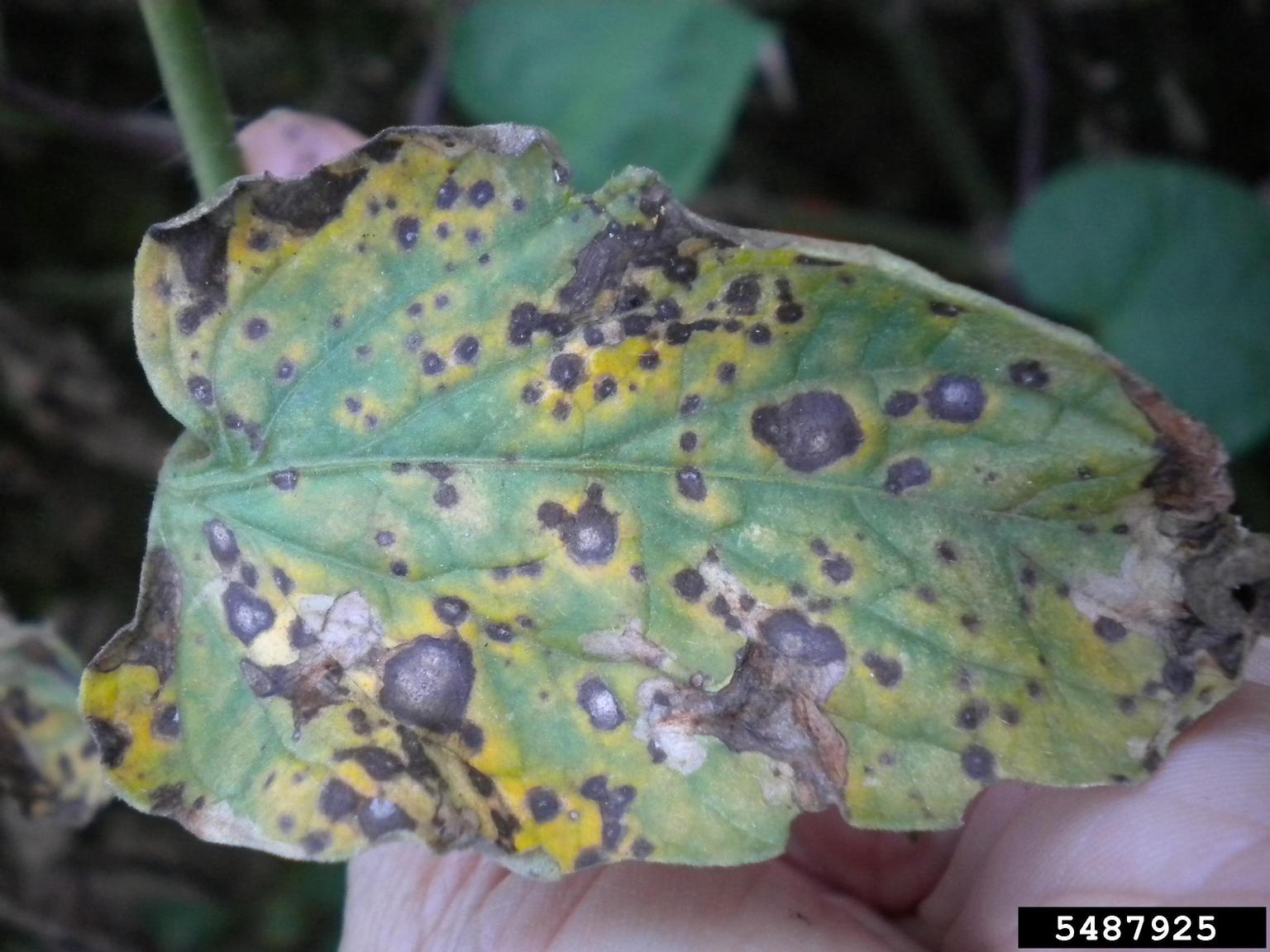
If you grow tomatoes in a greenhouse or high tunnel, you are more likely to have problems with leaf mold of tomato. What is tomato leaf mold? Read on to find out the symptoms of tomatoes with leaf mold and tomato leaf mold treatment options.
What is Tomato Leaf Mold?
Leaf mold of tomato is caused by pathogen Passalora fulva. It is found throughout the world, predominantly on tomatoes grown where the relative humidity is high, particularly in plastic greenhouses. Occasionally, if conditions are just right, leaf mold of tomato can be a problem on field grown fruit. Symptoms start as pale green to yellowish spots on upper leaf surfaces that turn a bright yellow. The spots merge as the disease progresses and the foliage then dies. Infected leaves curl, wither, and often drop from the plant. Flowers, stems, and fruit may be infected, although usually only leaf tissue is affected. When the disease does manifest on the fruit, tomatoes with leaf mold become dark in color, leathery, and rot at the stem end.
Tomato Leaf Mold Treatment
The pathogen P. fulfa can survive on infected plant debris or in the soil, although the initial source of the disease is often infected seed. The disease is spread by rain and wind, on tools and clothing, and via insect activity. High relative humidity (greater that 85%) combined with high temperatures encourages the spread of the disease. With that in mind, if growing tomatoes in a greenhouse, maintain night temps higher than outside temperatures. When planting, use only certified disease-free seed or treated seed. Remove and destroy all crop debris post-harvest. Sanitize the greenhouse between crop seasons. Use fans and avoid overhead watering to minimize leaf wetness. Also, stake and prune plants to increase ventilation. If the disease is detected, apply a fungicide according to the manufacturer’s instructions at the first sign of infection.
Sign up for the Gardening Know How newsletter today and receive a free copy of our e-book "How to Grow Delicious Tomatoes".

Amy Grant has been gardening for 30 years and writing for 15. A professional chef and caterer, Amy's area of expertise is culinary gardening.
